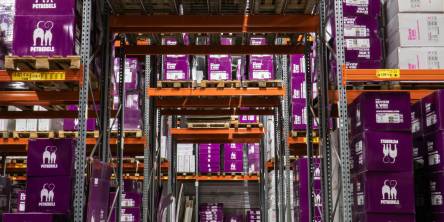Azure Synapse Analytics versus Microsoft Fabric: A Side by Side Comparison

Given the staggeringly high amounts of data being generated worldwide every single day, it ought to come as no surprise that organizations often struggle to pick the right tools to help them effectively harness the potential of all their data. And in this continually evolving realm of data management and analytics, Azure Synapse Analytics and Microsoft Fabric have emerged as the top contenders. But which of these two should one choose?
If you, too, are pondering the same question, you have come to the right place. So, read on to know what Azure Synapse Analytics and Microsoft Fabric are all about and the main differences between the two.
What Refers to Azure Synapse Analytics?
Built on the Azure cloud platform, Synapse Analytics is an analytics service that combines data warehousing with big data analytics. Simply put, it brings a platform to enable data ingestion, storage, processing, analysis, and visualization, no matter its volume or variety.
What Refers to Microsoft Fabric?
On the outset, Microsoft Fabric is an analytics platform enabling data ingestion, processing, analysis, and visualization. However, it includes the capabilities of several Azure services, including Synapse Analytics and Azure Data Share, Power BI, etc. This basically means that Synapse Analytics is a subset of Fabric.
However, just the definitions are not enough to help you decide if you need Azure Analytics or MS Fabric services. This is why we compiled a list of the primary differences between the two. Read on to know more.
Azure Synapse Analytics vs Microsoft Fabric: How Are They Different?
- Data sharing: Fabric can offer users extensive data sharing capabilities, thanks to Azure Data Share. Now that's not to say that Synapse Analytics doesn't offer such capabilities — it does, but through linked services and dedicated pools. Another notable difference is that while Fabric allows data to be shared with collaborators, customers, and external partners, that is not the case with Synapse. Synapse allows data to be shared only within an organization and with controlled access.
- Storage format: In the context of the primary storage format, Azure Synapse Analytics uses the Synapse SQL pool for structured data and Azure Data Lake Storage Gen2 for unstructured data. On the other hand, Fabric uses the OneLake data lake format, allowing users to store structured, semi-structured, and, even unstructured data.
- Performance: Another critical point of distinction is performance, of course. Microsoft Fabric relies on Azure's infrastructure to deliver optimized performance. On the other hand, the Synapse SQL pool too enables high-quality performance for demanding workloads and that too with auto-scale capabilities.
- Scalability: Scalability too, remains a critical differentiating factor for businesses today and understandably so. Anyway, in this department, Fabric can be automatically scaled based on demand. Synapse offers the ability to scale manually and automatically: Synapse SQL pool can scale automatically depending on the workload requirements, whereas Spark pools can be manually scaled.
Final Words
In conclusion, the comparison between Azure Synapse Analytics and Microsoft Fabric reveals two robust solutions designed to address distinct data and analytics needs. With its integrated analytics service, Azure Synapse Analytics offers a comprehensive platform for big data and data warehouse scenarios. Its ability to seamlessly bridge the gap between data preparation and analytics empowers organizations to derive meaningful insights from their data. And if you need help with Azure Synapse Analytics, you can work with a specialist data analytics company that offers services for Azure Analytics. On the other hand, Microsoft Fabric, with its focus on simplifying and accelerating the development of scalable and resilient microservices, serves as a robust foundation for building modern, cloud-native applications. Its emphasis on agility and scalability makes it a valuable choice for organizations seeking to architect and deploy applications modularly and efficiently.
Ultimately, the choice between Azure Synapse Analytics and Microsoft Fabric depends on the specific requirements and goals of the organization. Whether the priority is optimizing data analytics workflows or developing scalable and resilient applications, Azure Synapse Analytics and Microsoft Fabric offer compelling features within their respective domains. As organizations navigate the evolving landscape of cloud services, a thorough understanding of their unique needs will guide them toward making an informed decision that aligns seamlessly with their business objectives and technical requirements.
Similar Articles
For modern businesses to thrive, ensuring the effective management of inventory stands has become vitally important. Inventory management stands as a cornerstone of success. And the emergence of the Internet of Things (IoT) has introduced a new era of connectivity and efficiency across diverse industries.
Do you know what the following e-commerce companies have in common: Amazon, Walmart, eBay, and more? All of these e-commerce companies' apps make use of Java. Java is decidedly among the leading choices of programming language for e-commerce applications because it offers a world of benefits; for example, since Java code can be run on any platform with a Java Virtual Machine (JVM), users of e-commerce apps made with Java can access the said apps on a variety of devices.
Nikola Tesla in 1926, once described what is now called a mobile phone as a telephone that can fit into one's “vest pocket.” As otherworldly as that idea was then, nearly a century later, the reality is even more astounding.
Managing properties can be a difficult task with the right tools. Property owners must find and use the best property management software. It can be a long and tedious process as there are many options in the property management software market.
In the ever-evolving financial services landscape, industry challenges are numerous and complex. From stringent regulations to rapidly advancing technology and changing consumer expectations, financial institutions face many obstacles.
The human learning capability is a great resource for helping technology evolve and grow, breaking boundaries, and creating new ones. Emulating the ability of humans to learn at a gradual but retentive pace, Machine Learning is the latest power monster that is redefining human-machine interaction.
In the ever-evolving landscape of low-code development, Microsoft's Power Platform stands out as a powerful tool for building custom applications. In today's dynamic digital landscape, creating and managing web pages is no longer the exclusive realm of professional web developers
In the data-driven business world, where information is of utmost priority, organizations are increasingly turning to data warehousing and data marts to harness the power of their data. These data management solutions are pivotal in transforming raw data into actionable insights.
Organizations today deal with massive amounts of data. To make informed decisions based on such data, it is necessary to analyze the data in a way that gives insights that can be acted upon. Data flow itself can be unreliable and there are many points during their transfer from one system to another where data can be prone to corruption.









